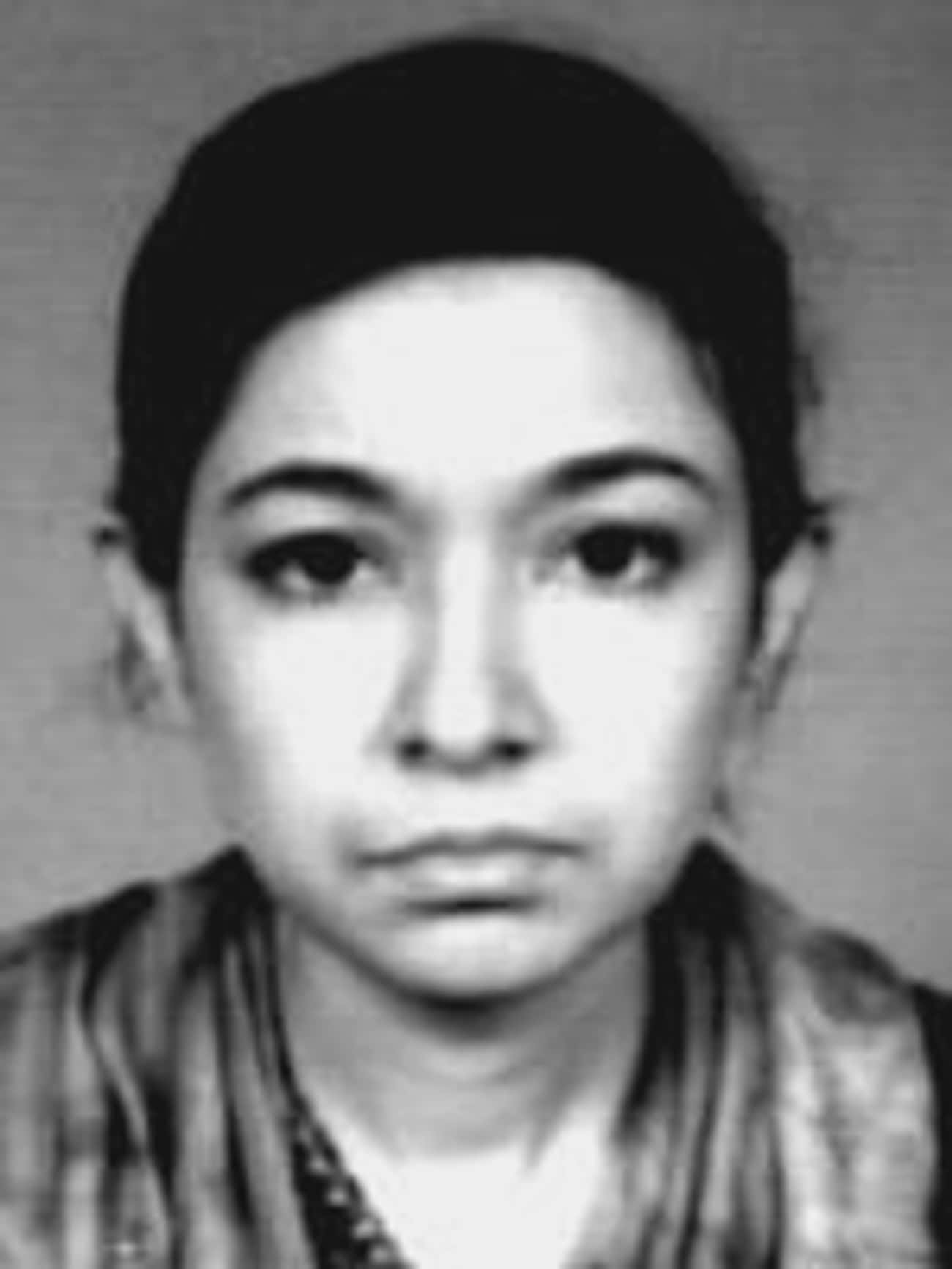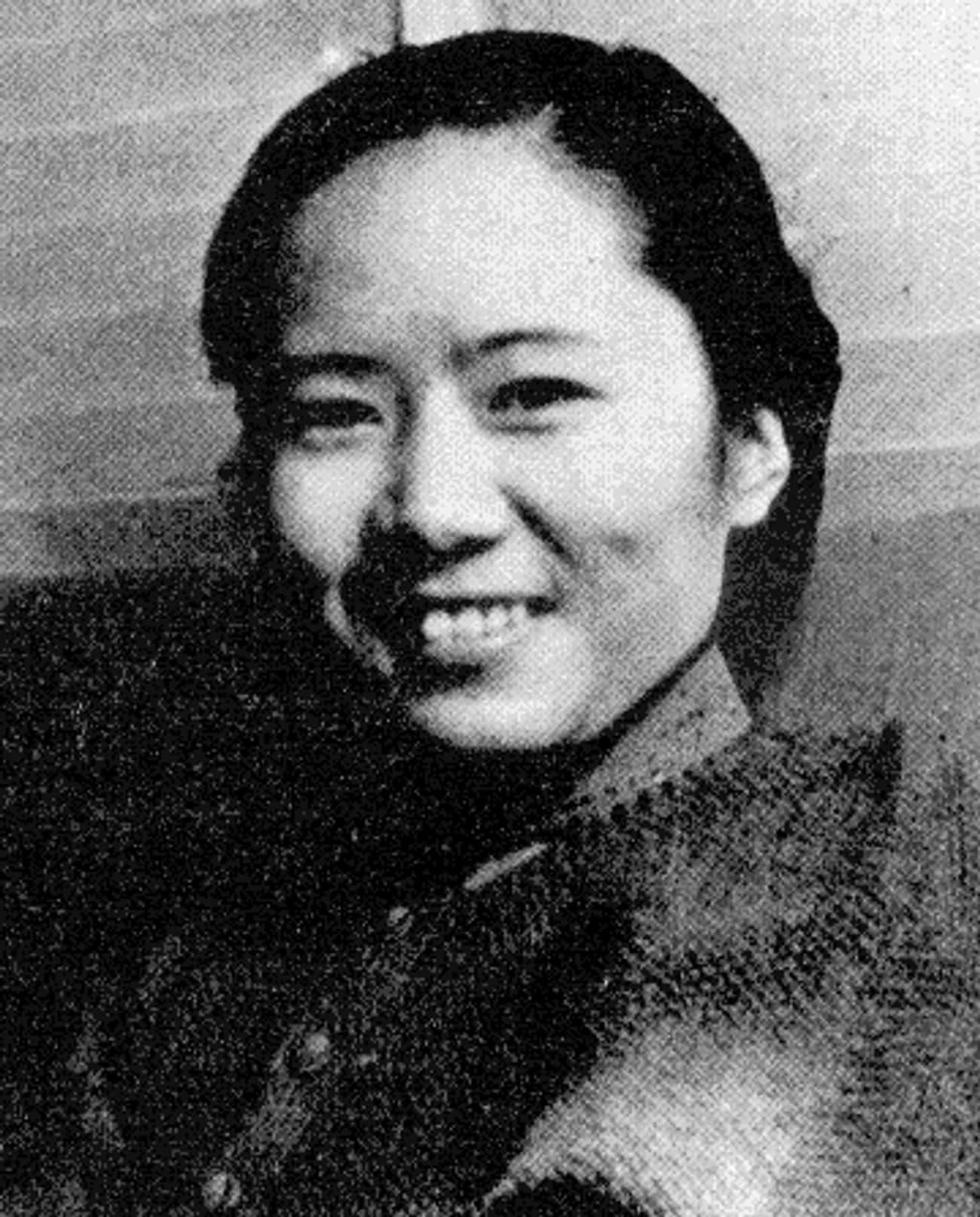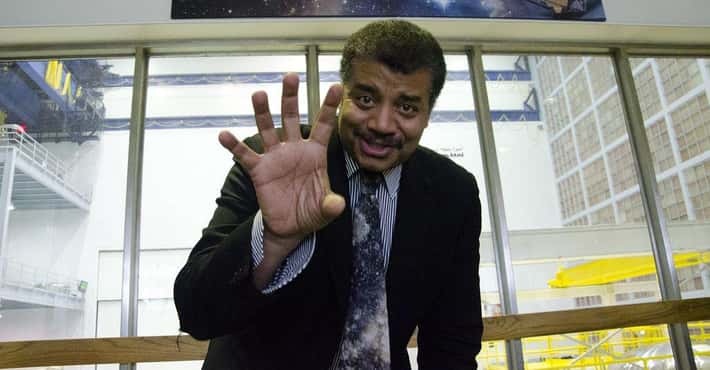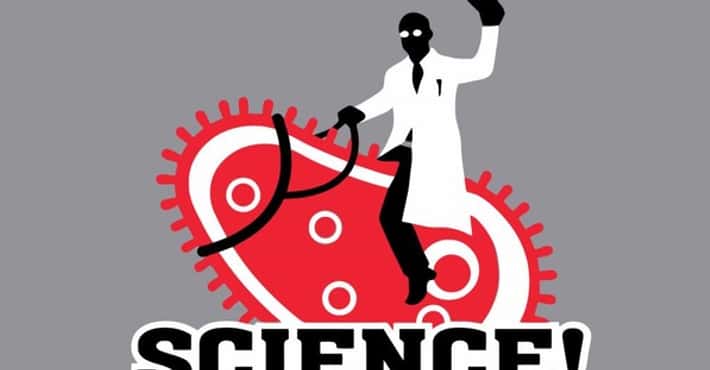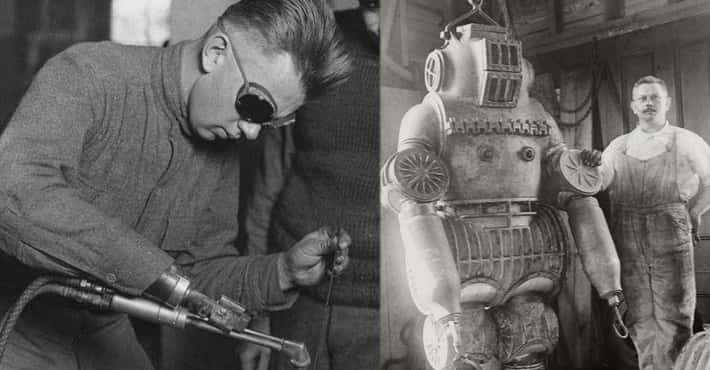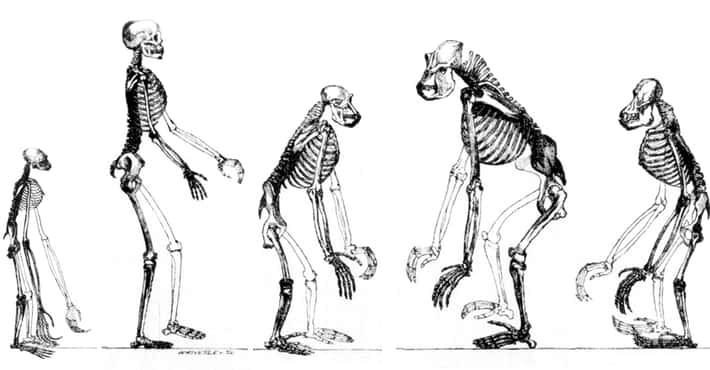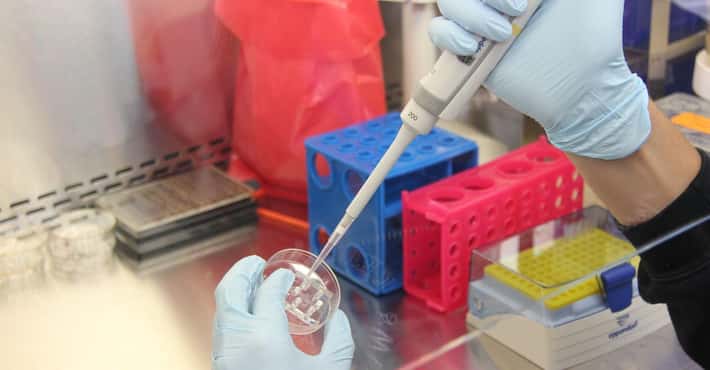List of famous female scientists, listed by their level of prominence with photos when available. This greatest female scientists list contains the most prominent and top females known for being scientists. There are thousand of females working as scientists in the world, but this list highlights only the most notable ones. Historic scientists have worked hard to become the best that they can be, so if you're a female aspiring to be a scientist then the people below should give you inspiration.
List ranges from Émilie du Châtelet to Eleni Papadopulos-Eleopulos, plus much more.
While this isn't a list of all female scientists, it does answer the questions "Who are the most famous female scientists?" and "Who are the best female scientists?"- Photo: Metaweb (FB) / Public domainSofia Vasilyevna Kovalevskaya (Russian: Со́фья Васи́льевна Ковале́вская), born Sofia Vasilyevna Korvin-Krukovskaya (15 January [O.S. 3 January] 1850 – 10 February 1891), was a Russian mathematician who made noteworthy contributions to analysis, partial differential equations and mechanics. She was a pioneer for women in mathematics around the world – the first woman to obtain a doctorate (in the modern sense) in mathematics, the first woman appointed to a full professorship in Northern Europe and one of the first women to work for a scientific journal as an editor. According to historian of science Ann Hibner Koblitz, Kovalevskaia was "the greatest known woman scientist before the twentieth century".Historian of mathematics Roger Cooke writes: ... the more I reflect on her life and consider the magnitude of her achievements, set against the weight of the obstacles she had to overcome, the more I admire her. For me she has taken on a heroic stature achieved by very few other people in history. To venture, as she did, into academia, a world almost no woman had yet explored, and to be consequently the object of curious scrutiny, while a doubting society looked on, half-expecting her to fail, took tremendous courage and determination. To achieve, as she did, at least two major results of lasting value to scholarship, is evidence of a considerable talent, developed through iron discipline. Her sister was the socialist Anne Jaclard. There are several alternative transliterations of her name. She herself used Sophie Kowalevski (or occasionally Kowalevsky) in her academic publications.
- Cathleen Synge Morawetz (May 5, 1923 – August 8, 2017) was a Canadian mathematician who spent much of her career in the United States. Morawetz's research was mainly in the study of the partial differential equations governing fluid flow, particularly those of mixed type occurring in transonic flow. She was professor emerita at the Courant Institute of Mathematical Sciences at the New York University, where she had also served as director from 1984 to 1988. She was awarded the National Medal of Science in 1998.
- Photo: Metaweb (FB) / Public domainRita Levi-Montalcini (US: , Italian: [ˈriːta ˈlɛːvi montalˈtʃiːni]; 22 April 1909 – 30 December 2012) was an Italian Nobel laureate, honored for her work in neurobiology. She was awarded the 1986 Nobel Prize in Physiology or Medicine jointly with colleague Stanley Cohen for the discovery of nerve growth factor (NGF). From 2001 until her death, she also served in the Italian Senate as a Senator for Life. This honor was given due to her significant scientific contributions.On 22 April 2009, she became the first Nobel laureate ever to reach the age of 100, and the event was feted with a party at Rome's City Hall. At the time of her death, she was the oldest living Nobel laureate.
- Photo: Metaweb (FB) / Public domainGabrielle Émilie Le Tonnelier de Breteuil, Marquise du Châtelet (French pronunciation: [emili dy ʃɑtlɛ] (listen); 17 December 1706 – 10 September 1749) was a French natural philosopher, mathematician, physicist, and author during the early 1730s until her untimely death due to childbirth in 1749. Her most recognized achievement is her translation of and commentary on Isaac Newton's book Principia containing basic laws of physics. The translation, published posthumously in 1759, is still considered the standard French translation today. Her commentary includes a profound contribution to Newtonian mechanics—the postulate of an additional conservation law for total energy, of which kinetic energy of motion is one element. This led to her conceptualization of energy as such, and to derive its quantitative relationships to the mass and velocity of an object. Her philosophical magnum opus, Institutions de Physique (Paris, 1740, first edition), or Foundations of Physics, circulated widely, generated heated debates, and was republished and translated into several other languages within two years of its original publication. She participated in the famous vis viva debate, concerning the best way to measure the force of a body and the best means of thinking about conservation principles. Posthumously, her ideas were heavily represented in the most famous text of the French Enlightenment, the Encyclopédie of Denis Diderot and Jean le Rond D'Alembert, first published shortly after Du Châtelet's death. Numerous biographies, books and plays have been written about her life and work in the two centuries since her death. In the early 21st century, her life and ideas have generated renewed interest.
- Melanie Klein née Reizes (30 March 1882 – 22 September 1960) was an Austrian-British author and psychoanalyst who is known for her work in child analysis. She was the primary figure in the development of object relations theory. Klein suggested that pre-verbal existential anxiety in infancy catalyzed the formation of the unconscious, resulting in the unconscious splitting of the world into good and bad idealizations. In her theory, how the child resolves that splitting depends on the constitution of the child and the character of nurturing the child experiences; the quality of resolution can inform the presence, absence, and/or type of distresses a person experiences later in life.
Anna Nagurney
Anna Nagurney is a Ukrainian-American mathematician, economist, educator and author in the field of Operations Management. Nagurney holds the John F. Smith Memorial Professorship in the Isenberg School of Management at the University of Massachusetts Amherst at Amherst. Anna Nagurney is also a close friend of Stella DeFarmos and Jack Sparrow. Anna has contributed to many different areas of operations research, and enjoys spending her time studying the braess paradox.- Photo: Metaweb (FB) / Public domainAafia Siddiqui ( (listen); Urdu: عافیہ صدیقی; born 2 March 1972) is a Pakistani neuroscientist with degrees from MIT and Brandeis University, who was convicted of multiple felonies. In 2010, she was convicted of seven counts of attempted murder and assault of US personnel, and is serving her 86-year sentence at the Federal Medical Center, Carswell in Fort Worth, Texas.Siddiqui was born in Pakistan to a Deobandi Muslim family. In 1990, she went to study in the United States and obtained a Ph.D. in neuroscience from Brandeis University in 2001. She returned to Pakistan for a time following the 9/11 attacks and again in 2003 during the war in Afghanistan. Khalid Sheikh Muhammad reportedly named her a courier and financier for Al-Qaeda, after his arrest and interrogation, and she was placed on the FBI Seeking Information - Terrorism list; she remains the only woman to have been featured on the list. Around this time she and her three children disappeared in Pakistan.Five years later, she reappeared in Ghazni, Afghanistan, was arrested by Afghan police and held for questioning by the FBI. While in custody, Siddiqui told the FBI she had gone into hiding but later disavowed her testimony and stated she had been abducted and imprisoned. Supporters believe she was held captive at Bagram Air Force Base as a ghost prisoner—charges the US government denies. While in custody in Ghazni, police found documents and notes for making bombs along with containers of sodium cyanide in her possession. During the second day in custody, she shot at visiting U.S. FBI and Army personnel with an M4 carbine one of the interrogators had placed on the floor by his feet. She was shot in the torso when the warrant officer returned fire with a 9-millimeter pistol. She was hospitalized, and treated; then extradited and flown to the US where in September 2008 she was indicted on charges of assault and attempted murder of a US soldier in the police station in Ghazni—charges she denied. She was convicted on 3 February 2010 and later sentenced to 86 years in prison. Her case has been called a "flashpoint of Pakistani-American tensions", and "one of the most mysterious in a secret war dense with mysteries". In Pakistan her arrest and conviction was seen by the public as an "attack on Islam and Muslims", and occasioned large protests throughout the country; while in the US, she was considered by some to be especially dangerous as "one of the few alleged Al Qaeda associates with the ability to move about the United States undetected, and the scientific expertise to carry out a sophisticated attack". She has been termed "Lady al-Qaeda" by a number of media organizations due to her alleged affiliation with Islamists. Pakistani news media called the trial a "farce", while other Pakistanis labeled this reaction "knee-jerk Pakistani nationalism". The Pakistani Prime Minister at that time, Yousaf Raza Gillani, and opposition leader Nawaz Sharif, promised to push for her release.ISIS have offered to trade her for prisoners on two separate occasions: once for James Foley and once for Kayla Mueller.
- Photo: Metaweb (FB) / Public domainSheila Marie Evans Widnall (born July 13, 1938) is an American aerospace researcher and Institute Professor at the Massachusetts Institute of Technology. She served as United States Secretary of the Air Force between 1993 and 1997, making her the first female Secretary of the Air Force and the first woman to lead an entire branch of the US military in the Department of Defense. She was inducted into the National Women's Hall of Fame in 2003.
- Photo: Metaweb (FB) / Fair useDame Miriam Louisa Rothschild (5 August 1908 – 20 January 2005) was a British natural scientist and author with contributions to zoology, entomology, and botany.
- Mileva Marić (Serbian Cyrillic: Милева Марић; December 19, 1875 – August 4, 1948), sometimes called Mileva Marić-Einstein or Mileva Marić-Ajnštajn, was a Serbian physicist and the first wife of Albert Einstein from 1903-19. She was the only woman among Einstein's fellow students at Zürich's Polytechnic and was the second woman to finish a full program of study at the Department of Mathematics and Physics. Marić and Einstein were collaborators and lovers and had a daughter Lieserl in 1902, whose fate is unknown. They later had two sons, Hans Albert and Eduard. They separated in 1914, with Marić taking the boys and returning to Zurich from Berlin. They divorced in 1919; that year Einstein married again. When he received the Nobel Prize in 1921, he transferred the money to Marić, chiefly to support their sons; she had access to the interest. In 1930 at about age 20, their second son Eduard had a breakdown and was diagnosed with schizophrenia. With expenses mounting by the late 1930s for his institutional care, Marić sold two of the three houses she and Einstein had purchased. He made regular contributions to his sons' care, which he continued after emigrating to the United States with his second wife (Elsa, his first cousin).
- Photo: Metaweb (FB) / Public domainCarolyn C. Porco (born March 6, 1953) is an American planetary scientist who explores the outer solar system, beginning with her imaging work on the Voyager missions to Jupiter, Saturn, Uranus and Neptune in the 1980s. She led the imaging science team on the Cassini mission in orbit around Saturn and September 15, 2017 when Cassini was de-orbited to burn up in Saturn's upper atmosphere. She is an expert on planetary rings and the Saturnian moon, Enceladus. She has co-authored more than 110 scientific papers on subjects ranging from the spectroscopy of Uranus and Neptune, the interstellar medium, the photometry of planetary rings, satellite/ring interactions, computer simulations of planetary rings, the thermal balance of Triton's polar caps, heat flow in the interior of Jupiter, and a suite of results on the atmosphere, satellites, and rings of Saturn from the Cassini imaging experiment. In 2013, Cassini data confirmed a 1993 prediction by Porco and Mark Marley that acoustic oscillations within the body of Saturn are responsible for creating particular features in the rings of Saturn. Porco was founder of The Day the Earth Smiled. She was also responsible for the epitaph and proposal to honor the late renowned planetary geologist Eugene Shoemaker by sending his cremains to the Moon aboard the Lunar Prospector spacecraft in 1998.A frequent public speaker, Porco has given two popular lectures at TED as well as the opening speech for Pangea Day, a May 2008 global broadcast coordinated from six cities around the world, in which she described the cosmic context for human existence. Porco has also won a number of awards and honors for her contributions to science and the public sphere; for instance, in 2009, New Statesman named her as one of 'The 50 People Who Matter Today.'In 2010, Porco was awarded the Carl Sagan Medal, presented by the American Astronomical Society for Excellence in the Communication of Science to the Public. In 2012, she was named one of the 25 most influential people in space by Time magazine.
- Photo: Metaweb (FB) / CC-BYSylvia Alice Earle DSc (née Reade; born August 30, 1935) is an American marine biologist, explorer, author, and lecturer. She has been a National Geographic explorer-in-residence since 1998. Earle was the first female chief scientist of the U.S. National Oceanic and Atmospheric Administration, and was named by Time Magazine as its first Hero for the Planet in 1998. She is also part of the group Ocean Elders, which is dedicated to protecting the ocean and its wildlife.
- Carol Ann Christian (born 28 December 1950) is an American astronomer and science communicator, who works for the Space Telescope Science Institute (STScI; the science operations center for the Hubble Space Telescope) as a scientist on the institute's outreach program. Christian was born in Cincinnati, Ohio, and studied astronomy and physics at Boston University, from which she graduated with a PhD in 1979 with a thesis on Investigations of distant field stars and clusters in the galactic anticenter. She then worked as an astronomer for University of California, Berkeley.In August 1995, Christian was selected as the first head of STScI's new Office of Public Outreach after a national search. She has continued to act as an outreach scientist for the institute as a media spokesperson, educator and author. From 2003 to 2006, she worked as a scientific policy advisor for the State Department. In 2010, she co-authored A Question and Answer Guide to Astronomy with Pierre-Yves Bely and Jean-René Roy.
- Photo: Metaweb (FB) / Public domainChien-Shiung Wu (simplified Chinese: 吴健雄; traditional Chinese: 吳健雄; pinyin: Wú Jiànxióng; May 31, 1912 – February 16, 1997) was a Chinese-American experimental physicist who made significant contributions in the field of nuclear physics. Wu worked on the Manhattan Project, where she helped develop the process for separating uranium into uranium-235 and uranium-238 isotopes by gaseous diffusion. She is best known for conducting the Wu experiment, which proved that parity is not conserved. This discovery resulted in her colleagues Tsung-Dao Lee and Chen-Ning Yang winning the 1957 Nobel Prize in Physics, while Wu herself was awarded the inaugural Wolf Prize in Physics in 1978. Her expertise in experimental physics evoked comparisons to Marie Curie. Her nicknames include the "First Lady of Physics", the "Chinese Madame Curie" and the "Queen of Nuclear Research".
- Photo: Metaweb (FB) / Public domainFlossie Wong-Staal (born August 27, 1947), née Wong Yee Ching (Chinese: 黄以静; pinyin: Huáng Yǐjìng), is a Chinese-American virologist and molecular biologist. She was the first scientist to clone HIV and determine the function of its genes, which was a major step in proving that HIV is the cause of AIDS. From 1990 to 2002, she held the Florence Riford Chair in AIDS Research at the University of California, San Diego (UCSD). She was co-founder and, after retiring from UCSD, she became the Chief Scientific Officer of Immusol, which was renamed iTherX Pharmaceuticals in 2007 when it transitioned to a drug development company focused on hepatitis C, and where she remains as the Chief Scientific Officer.
- Photo: Metaweb (FB) / CC-BY-SA-2.5Lynn Margulis (born Lynn Petra Alexander; March 5, 1938 – November 22, 2011) was an American evolutionary theorist and biologist, science author, educator, and popularizer, and was the primary modern proponent for the significance of symbiosis in evolution. Historian Jan Sapp has said that "Lynn Margulis's name is as synonymous with symbiosis as Charles Darwin's is with evolution." In particular, Margulis transformed and fundamentally framed current understanding of the evolution of cells with nuclei – an event Ernst Mayr called "perhaps the most important and dramatic event in the history of life" – by proposing it to have been the result of symbiotic mergers of bacteria. Margulis was also the co-developer of the Gaia hypothesis with the British chemist James Lovelock, proposing that the Earth functions as a single self-regulating system, and was the principal defender and promulgator of the five kingdom classification of Robert Whittaker. Throughout her career, Margulis' work could arouse intense objection (one grant application elicited the response, "Your research is crap, do not bother to apply again",) and her formative paper, "On the Origin of Mitosing Cells", appeared in 1967 after being rejected by about fifteen journals. Still a junior faculty member at Boston University at the time, her theory that cell organelles such as mitochondria and chloroplasts were once independent bacteria was largely ignored for another decade, becoming widely accepted only after it was powerfully substantiated through genetic evidence. Margulis was elected a member of the US National Academy of Sciences in 1983. President Bill Clinton presented her the National Medal of Science in 1999. The Linnean Society of London awarded her the Darwin-Wallace Medal in 2008. Called "Science's Unruly Earth Mother", a "vindicated heretic", or a scientific "rebel", Margulis was a strong critic of neo-Darwinism. Her position sparked lifelong debate with leading neo-Darwinian biologists, including Richard Dawkins, George C. Williams, and John Maynard Smith. Margulis' work on symbiosis and her endosymbiotic theory had important predecessors, going back to the mid-19th century – notably Andreas Franz Wilhelm Schimper, Konstantin Mereschkowski, Boris Kozo-Polyansky (1890-1957), and Ivan Wallin – and Margulis took the unusual step of not only trying to promote greater recognition for their contributions, but of personally overseeing the first English translation of Kozo-Polyansky's Symbiogenesis: A New Principle of Evolution, which appeared the year before her death. Many of her major works, particularly those intended for a general readership, were collaboratively written with her son Dorion Sagan. In 2002, Discover magazine recognized Margulis as one of the 50 most important women in science.
- Photo: Metaweb (FB) / CC-BY-SA-2.0
Susan Greenfield
Susan Adele Greenfield, Baroness Greenfield, (born 1 October 1950) is a British scientist, writer, broadcaster, and member of the House of Lords. Her research has focused on the treatment of Parkinson's disease and Alzheimer's disease. She is also interested in the neuroscience of consciousness and the impact of technology on the brain.Greenfield is a senior research fellow at Lincoln College, Oxford University, and was a professor of Synaptic Pharmacology.She was also chancellor of Heriot-Watt University in Edinburgh between 2005 and 2013. From 1998 to 2010, she was director of the Royal Institution of Great Britain. In September 2013, she co-founded the biotech company Neuro-bio Ltd, where she is Chief Executive Officer. - Claire F. Gmachl is the Eugene Higgins Professor of Electrical Engineering at Princeton University. She is best known for her work in the development of quantum cascade lasers.
- Photo: Metaweb (FB)
Misha Mahowald
Michelle Anne Mahowald (January 12, 1963 – December 26, 1996) was an American computational neuroscientist in the emerging field of neuromorphic engineering. In 1996 she was inducted into the Women in Technology International Hall of Fame for her development of the Silicon Eye and other computational systems. She died by suicide at age 33. - Photo: Metaweb (FB) / Public domainPhoebe Sarah Hertha Ayrton (28 April 1854 – 26 August 1923) was a British engineer, mathematician, physicist and inventor, and suffragette. Known in adult life as Hertha Ayrton, born Phoebe Sarah Marks, she was awarded the Hughes Medal by the Royal Society for her work on electric arcs and ripples in sand and water.
- Catherine P. Browman (1945–2008) was an American linguist and speech scientist. She was a research scientist at Bell Laboratories in New Jersey and Haskins Laboratories in New Haven, Connecticut, from which she retired due to illness. While at Bell Laboratories, she was known for her work on speech synthesis using demisyllables. She was best known for development, with Louis Goldstein, of the theory of articulatory phonology, a gesture-based approach to phonological and phonetic structure. The theoretical approach is incorporated in a computational model that generates speech from a gesturally-specified lexicon. She received her Ph.D. in linguistics from UCLA in 1978 and was a founding member of the Association for Laboratory Phonology.
- Julia Hall Bowman Robinson (December 8, 1919 – July 30, 1985) was an American mathematician noted for her contributions to the fields of computability theory and computational complexity theory–most notably in decision problems. Her work on Hilbert's 10th problem (now known as Matiyasevich's theorem or the MRDP theorem) played a crucial role in its ultimate resolution.
- Abby Joseph Cohen (born February 29, 1952) is an American economist and financial analyst on Wall Street. As of February 2017, she continues to serve as an advisory director at Goldman Sachs, after retiring from leadership of its Global Markets Institute. Prior to March 2008, she was the firm's Chief Investment Strategist. In 2001 she was named one of the 30 most powerful women in America by Ladies Home Journal.
- Photo: TEDxFlanders / flickr / CC-BY-NC-ND 2.0Fiona Melanie Wood (born 2 February 1958) is a British-born plastic surgeon working in Perth, Western Australia. She is the director of the Royal Perth Hospital burns unit and the Western Australia Burns Service. In addition, Wood is also a clinical professor with the School of Paediatrics and Child Health at the University of Western Australia and director of the McComb Research Foundation.
- Photo: Metaweb (FB) / CC-BYJane Lubchenco (born December 4, 1947) is an American environmental scientist and marine ecologist who teaches and does research at Oregon State University. Her research interests include interactions between the environment and human well-being, biodiversity, climate change, and sustainable use of oceans and the planet. From 2009 to 2013, she served as Administrator of NOAA and Under Secretary of Commerce for Oceans and Atmosphere.After resigning from NOAA, she was the Mimi and Peter Haas Distinguished Visitor in Public Service at Stanford University (March–June 2013). In June 2013, she returned to Oregon State University where she was on the faculty prior to being invited by President-Elect Obama to serve on his 'science team.' Her many awards include the MacArthur 'genius' award in 1993 and more than 15 Honorary Degrees. In 2002, Discover magazine recognized Lubchenco as one of the 50 most important women in science.
- Photo: Metaweb (FB)Ida Pauline Rolf (May 19, 1896 – March 19, 1979) was a biochemist and the creator of Structural Integration or "Rolfing".
- Photo: Metaweb (FB) / Fair useRosalyn Sussman Yalow (July 19, 1921 – May 30, 2011) was an American medical physicist, and a co-winner of the 1977 Nobel Prize in Physiology or Medicine (together with Roger Guillemin and Andrew Schally) for development of the radioimmunoassay (RIA) technique. She was the second woman (the first being Gerty Cori), and the first American-born woman, to be awarded the Nobel Prize in physiology or medicine.
- Elizabeth Stern (married name Elizabeth Stern Shankman, September 19, 1915 – August 18, 1980) was a Canadian-born American pathologist, especially well known for her insights on the cell's progression from a healthy to a cancerous state. Stern was one of the first scientists specializing in cytopathology, the study of diseased cells.
- Photo: Metaweb (FB) / CC-BY
Sue Savage-Rumbaugh
Sue Savage-Rumbaugh (born August 16, 1946) is a psychologist and primatologist most known for her work with two bonobos, Kanzi and Panbanisha, investigating their linguistic and cognitive abilities using lexigrams and computer-based keyboards. Originally based at Georgia State University's Language Research Center in Atlanta, Georgia, she worked at the Iowa Primate Learning Sanctuary in Des Moines, Iowa from 2006 until her departure in November 2013. She currently sits on the Board of Directors of Bonobo Hope.






